I realize most of our followers work with flowers every day, but do you know the parts?
I studied them in science class many moons ago, but when I really thought about it, I could not name more than pistil, petal and stamen. In my research, there were many very confusing explanations and diagrams — so I’ve tried to keep it as simple as possible. (And painted my own diagrams!) Hopefully, my findings will help you too.
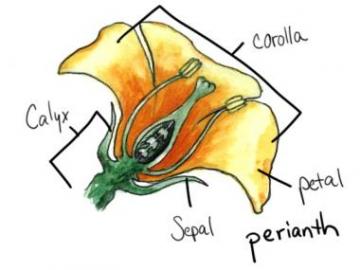
Let’s break this down. The diagram above shows the perianth, or the collection of petals and sepals.
Petal – The showy part of the flower used to attract pollinators with its bright colors. (We all should know this one!)
Corolla – The term for all the petals on a flower.
Sepal – Area of the flower underneath the petals which is generally green. They enclose the flower in its budding stage.
Calyx – The term for all of the sepals on a flower.
Perianth – The calyx and corolla, or the sterile part of the flower.
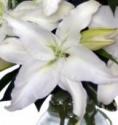 Of course, there are many variations of flowers and even variations of the variations. For instance, you might find a flower without any sepals or so it seems. It could be they actually aren’t the little green ones we’re used to.
Of course, there are many variations of flowers and even variations of the variations. For instance, you might find a flower without any sepals or so it seems. It could be they actually aren’t the little green ones we’re used to.
Instead they share the same color and shape as the flower petals. When the petals and sepals are of similar color and shape, the structures of the perianth are referred to as tepals. You can see the tepals easily in the photo of lilies on the left. The three white petals on top are truly petals, the bottom three are actually sepals/tepals.
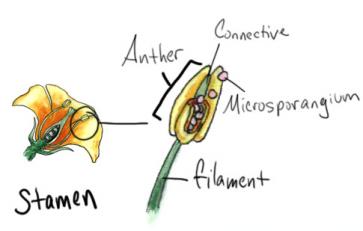
The next section of the flower we are going to look at is the stamen.
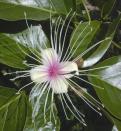 Stamen – The male organ of the flower.
Stamen – The male organ of the flower.
Androecium – The term for all of the stamens on a flower, there are usually six.
Filament – Stalk of the stamen which transports nutrients to the anther to make pollen.
Anther – The top section of the stamen above the filament. Produces and contains the microsporangium which produce pollen. Pollen is also released by the anther.
In the flower world, there are always acceptations to the rules. Take the photo of the spider tree to the above right, there are a lot more than six stamens!
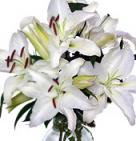
Great Florist Tip
By removing the predominant anthers off of some flowers you can cleanse the pollen off of the flowers and keep your customers from having to clean up after them. A good idea for sympathy flowers because they are normally over carpet.
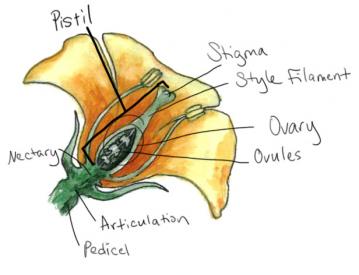
The last major part of the flower is its pistil. This is the female organ of the flower which contains eggs and nectar. There are a few more tiny parts I did not mention, but they go much farther into detail of the reproductive system of the plant.
Pistil – There is only one pistil on every flower, but it can have many ovaries.
Stigma – The sticky tip of the pistil used for receptor for pollen.
Style Filament – Stalk-like conduit for pollen for germination. (reproduction)
Nectaries – Glands of the flower which store nectar. Some flowers have colorful patterns on them called nectar guides to point birds in bees in the right direction.
Articulation – Joint between two parts of the plant, such as leaves and stem.
Pedicel – Stem that attaches single flowers to the main stem.
Peduncle – Stem or branch that hold a group of pedicels.
I hope reading this refreshed your memory a little bit. Flowers are fascinating and each one is different. This guide and diagrams define the general flower parts, but each flower is unique and some of the parts may be different than others. If you have any questions about parts of the flower or, well, anything flower related Ask Our Expert!


 Find Your
Find Your 

Speak Your Mind